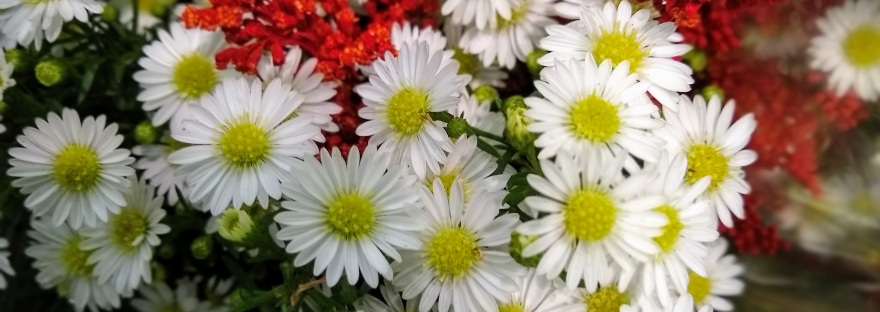What is Gentle Swedish Death Cleaning?
At a certain point in life when one falls seriously ill, or the 55+ crowd is downsizing and retiring to another location or country, or when there are family discussions about assisted living, it becomes clear mortality may be in the offing (hopefully far off) and belongings will be left behind.
Is it possible to prepare for the time-consuming task of divesting now? And could this activity bring a sense of relief to you and your loved ones?
The Gentle Art of Swedish Death Cleaning: How to Free Yourself and Your Family from a Lifetime of Clutter (part of The Swedish Art of Living and Dying series) by Margareta Magnusson, first published in 2017, addresses some of these questions..
Contrary to what the title may infer cleanings take place before your demise. They are intended as an exercise for the living and do not refer to having someone else bear the burden of tending to belongings after your departure.
In Swedish the exercise is döstädning — a combination of the word “dö” (death) and “städning” (cleaning). As Magnusson explains, “Death cleaning is not about dusting or mopping up; it is a permanent form of organization that makes your everyday life run more smoothly.”
Such “cleanings” are a decluttering and organization system not dissimilar from lifestyle trend books and videos such as Marie Kondo’s hugely popular Konmari, a Japanese organizing system (I add European comforts), or centuries old Danish “hygge” and Norwegian “hugga” lifestyles focused on keeping and enjoying all that is cozy and easy. Hugge, a colloquial term in Norwegian, means to comfort, console, or hug, but it may also mean to chop, cut out, or pare down. If you are a minimalist, these concepts are already familiar.
The process is ultimately like spring and fall cleaning. It may also be thought of as mindfulness about what you choose to surround yourself with now. It may also be thought of as a chance to discuss your wishes for end-of-life.
Takeaways from Magnusson’s book:
- Start in your 50’s (perhaps any age as it is never too early to be aware)
- Contact loved ones and let them know your plans (tag items now)
- Create an opportunity to discuss your End-of-Life plans, encourage candid conversation
- Begin divesting of less important personal items
- Gift possessions away gradually – furniture, books, collectibles, clothing
- Keep mementos and items you cherish or are useful – photos, letters, diaries
- Donate
- Prepare a list of important documents and passwords
- Continue decluttering
- Initiate a plan for who will inherit your pet or pets
- Focus on how this process will ultimately unburden children, executors, and others
- Notice how you may feel less stress or feel happier and freer as you do it

Considerations and Outcomes
The word death is off-putting for some but Magnusson’s intention is to invite us to simplify now to prepare for the inevitable – death in this lifetime. It is a practical and sensible way to help us reflect upon our legacies and what we are leaving behind. It is a kindness to those left behind creating a less burdensome aftermath. And to put it into perspective, it is the antithesis of being buried with all your belongings in a tomb for your afterlife as an Egyptian pharaoh. (Yes, the pharaohs left treasures for us to understand their civilization and we thank them).
Learning the Process Through Experience
I had the pleasure of living in Sweden as a student at the University of Stockholm International Graduate School. I rented rooms from older adults. I did not hear, read about, or witness this tradition.
It is not yet clear if döstädning is definitively Swedish, but Magnusson has certainly been the first to claim it as officially Swedish with her book. Based on my experience Swedes tend to be practical and realistic. In Sweden, you are cared for from cradle to grave with your taxes. Your burial is included. Gentle death cleaning makes sense culturally. It seems to be a Scandinavian custom.
Personal Experience
The unexpected demise of my beautiful mother taught me much. My father died, also unexpectedly, when my siblings and I were children. My mother put all her love energy into creating quality of life and fine memories for us to continue. One day she went for a routine surgery and did not survive. She had, however, organized everything just in case – life insurance, bank account, and a holographic will with a list of which heirlooms (paintings, silver, oriental carpets, family treasures) for each child. Even though I continue to choke up when remembering, it was an extraordinary gift of deep love and care. She modeled this concept without ever speaking of it, she had pre-planned all. A few years later, I began little by little to follow her lead.
Another quiet display of döstädning from the Greatest Generation: NOTICE WHEN SOMEONE OLDER STARTS GIVING THINGS AWAY. The action is a clue. It is likely they feel their moments in this lifetime may close in the not-too-distant future.
A lovely 80+ friend in Washington, D.C. called me one day and asked me to please visit. She was clear, “I am contemplating my demise.” Like me, she was a solo adult with no significant other, no children, and few relatives. She insisted I return to California with sacred items from her travels and family. It was an honor to receive the gifts given so tenderly. I treasure them and have marked them for homes with the next generation.

Another older friend, a neighbor above, was a descendant of a Spanish land grant family. He also lived, as did the fine lady from D.C., an intercontinental and sophisticated life. He too was a solo ager with no spouse or children and insisted on giving me an Austrian tea set, some Mexican silver, and other charming items to enjoy playing house and entertaining with. He died shortly after I received these love mementos.
Even though I shared my heart with my behavior, I wish I had known then how to share what their presence in my life meant to me and had a chance to say goodbye.
I started divesting in my late 40’s because loss (in my life) happens without warning and without time to prepare – sudden deaths of loved ones and friends, accidents, financial disappointments. I cherish my life. I feel my mission has yet to be completed. I carry on with items that bring me the most pleasure or are useful. I am grateful to those that modelled döstädning for me.
Fortunately, there are millennials and Gen-Xers in my life (though not all wish to have possessions) – a niece, a godson with four little children, friends from Oaxaca with extended families, a beloved doctor friend, young women friends and others who thankfully are present to be recipients.

If it appeals to you, start with döstädning as a spring and fall cleaning or downsizing so you may focus on quality of life to the end of your life. I suggest starting before you imagine you need to and proceed slowly. You may rediscover meaningful photos, old friends, memories. May you be inspired to find homes for or donate items. Your efforts will be a kindness to those who survive you. Best wishes as you discover and enjoy possible benefits if you have not done so already.
Resources:
https://www.bystored.com/blog/swedish-death-cleaning well-written review of Margareta Magnusson’s main how-to and why points by a storage company in London.
https://www.youtube.com/watch?v=G-HLC3KtzsE You Tube post from Penny Marshall of ITV as she visits the author, a funeral, and a death café in Sweden in 2019.
https://mexiconewsdaily.com/opinion/sarah-devries/toss-out-lockdown-junk/ Sarah DeVries in Xalapa, Veracruz, MX says “re-home” what you no longer need
“If you’re an expat, you’re probably already well-versed in the art of doing away with what no longer serves you so that you can make room for new adventures. In Latin America, where ample storage space is more of a luxury than a given, it can be extra important to make sure that one’s physical environment doesn’t suddenly turn into something resembling a dragon’s lair with mountains of “treasure” piled up all around.”
https://www.csmonitor.com/USA/Society/2017/0725/Boomer-parents-One-day-this-will-all-be-yours.-Grown-children-Noooo Not all boomer children want their parents’ belongings.
https://mylifesite.net/blog/post/im-not-ready-yet-part-1-what-goes-in-the-keep-pile/ a blog about decluttering and downsizing for moves to senior living
https://www.youtube.com/watch?v=u1TisVCm3D4 A mother (age 65) and her daughter listen to the audible Gentle Swedish Death Cleaning and have fun implementing some of the suggestions.
Wendy Jane Carrel, MA, is a Spanish-speaking senior care specialist and consultant from California. She has travelled Mexico for several years researching and studying health systems, housing, senior care, and end-of-life care to connect Americans, Canadians, and Europeans with healing options for loved ones. She has assessed hundreds of senior living choices in 16 Mexican states. Her web site is https://www.WellnessShepherd.com

